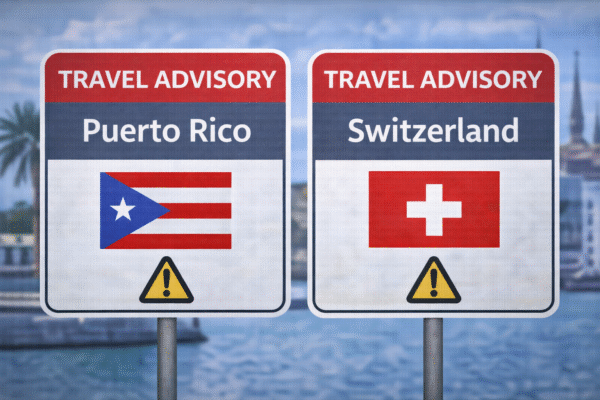Travelers across Hungary are facing significant transportation disruptions as a powerful weather system brings thunderstorms, hail, and high winds to much of the country, particularly impacting Budapest and the popular Lake Balaton region. Severe thunderstorms are expected to continue through July 8, prompting travel alerts from Hungary’s national air navigation and rail authorities.
According to the Hungarian Meteorological Service (HungaroMet), a corridor of intense storms is moving across Hungary, bringing heavy rainfall, damaging wind gusts of up to 170 km/h (105 mph), and hail. The impact is being felt most acutely at Budapest Ferenc Liszt International Airport (BUD) and across the national rail network, with widespread delays and cancellations expected.
Air Travel Delays at Budapest Airport Due to Airspace Restrictions
Budapest Airport, one of Central Europe’s busiest air hubs, is currently experiencing major delays and operational challenges due to airspace safety measures enacted by HungaroControl, Hungary’s national air traffic management agency. Temporary airspace restrictions have been imposed to ensure flight safety, affecting both departures and arrivals.
As of Monday morning, multiple airlines, including Wizz Air, Lufthansa, and Ryanair, have reported delays of up to two hours on flights to and from Budapest. Some short-haul flights have been rerouted, while long-haul services face extended holding patterns or ground delays.
HungaroControl has emphasized that these restrictions are necessary for safety as hailstorms and severe turbulence are forecast across Hungarian airspace. “Our priority is to ensure safe air navigation under rapidly changing storm conditions,” the agency stated.
Passengers are strongly advised to check their flight status directly with their airline or the official Budapest Airport website before heading to the airport. Travelers should also anticipate longer security and boarding processes due to increased operational strain.
Lake Balaton Rail Services Heavily Affected by Storm Damage
While air travelers in Budapest are facing turbulence above, those planning rail travel—particularly around Lake Balaton—are seeing widespread disruptions at ground level.
Hungary’s national railway operator, MÁV Group, has confirmed that major portions of the rail network near Lake Balaton are either partially suspended or delayed. Damage includes fallen trees on tracks, dislodged overhead power lines, and flooded tracks. The northern shore of the lake has seen the most severe damage, while trains along the southern shore are also affected due to structural concerns.
The most impacted routes include services between Budapest and Balatonfüred, as well as the popular summertime line connecting Siófok and Fonyód. MÁV reports that engineering crews are working around the clock to restore services but warns that delays may persist for 24 to 48 hours or longer.
Passengers can check real-time updates on affected train lines via MÁV’s official website.
Cold Front Brings Dramatic Temperature Drops and Health Risks
The current weather system is part of a fast-moving cold front that is causing a stark contrast in temperatures across Hungary. While eastern regions such as Debrecen are still experiencing highs above 30°C (86°F), western regions, including Veszprém and Győr, have seen temperatures fall by as much as 20°C (36°F) within 24 hours.
This rapid change poses risks, especially for sensitive individuals and the elderly. Health authorities have issued advisories for symptoms related to sudden temperature drops, including headaches, dizziness, and circulatory stress. Tourists are encouraged to dress in layers and stay hydrated to mitigate the effects of the abrupt weather change.
Rainfall totals are also climbing, with Veszprém and surrounding areas expected to receive as much as 28mm of rain. Although this offers some relief from the country’s recent drought conditions, it may also lead to localized flooding and dangerous road conditions.
UV Index Remains High Despite Overcast Skies
Despite the cooler temperatures and stormy weather, the UV index remains unusually high across much of Hungary, especially around midday. The Hungarian National Public Health Center urges tourists and residents to continue wearing sun protection, including SPF 30+ sunscreen and wide-brimmed hats, particularly during outdoor activities.
High UV radiation levels can still cause sunburn and dehydration even under partial cloud cover, so it is essential to take precautions, especially between 11 a.m. and 4 p.m.
Final Travel Advisory and Recommendations
Tourists and commuters planning to travel in or out of Hungary over the next 48 hours should expect continued delays and plan accordingly. Both Budapest Airport and HungaroControl are working closely to manage flight safety amid turbulent weather, while MÁV continues repair efforts on rail lines affected by storm damage.
Here’s what travelers should do:
- Check your flight or train status frequently. Use official websites or mobile apps for real-time updates.
- Arrive at airports and stations early to allow extra time for delays and rebookings.
- Pack for mixed weather, including waterproof outerwear and layered clothing.
- Stay indoors during high wind or hail warnings.
- Monitor health if sensitive to rapid temperature changes.
Hungarian authorities will continue to issue updates as the weather evolves.
For more travel news like this, keep reading Global Travel Wire
















